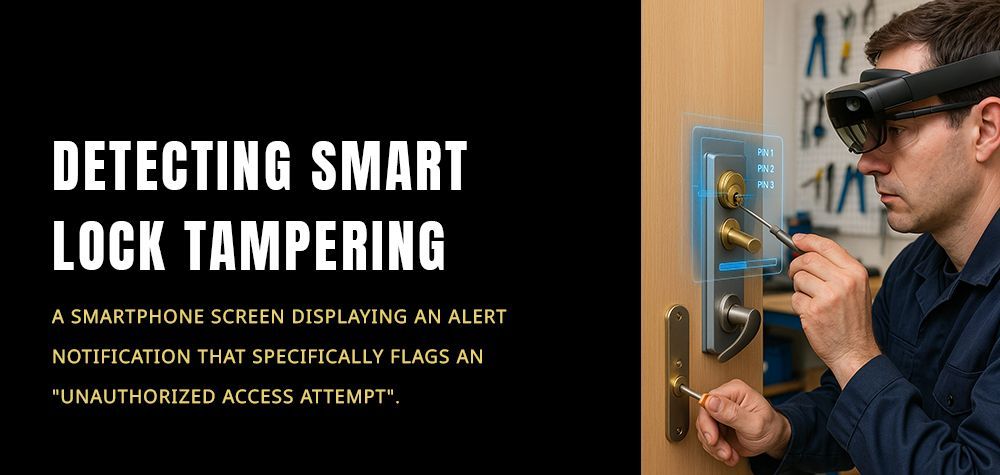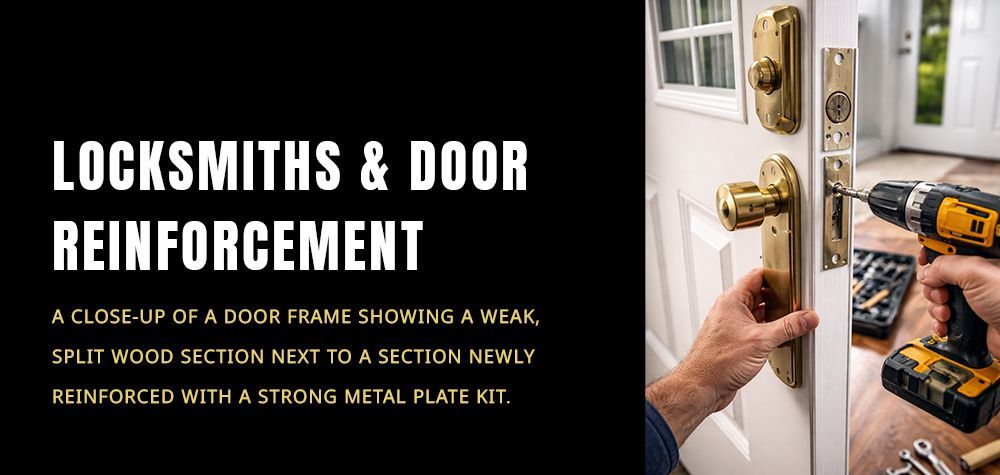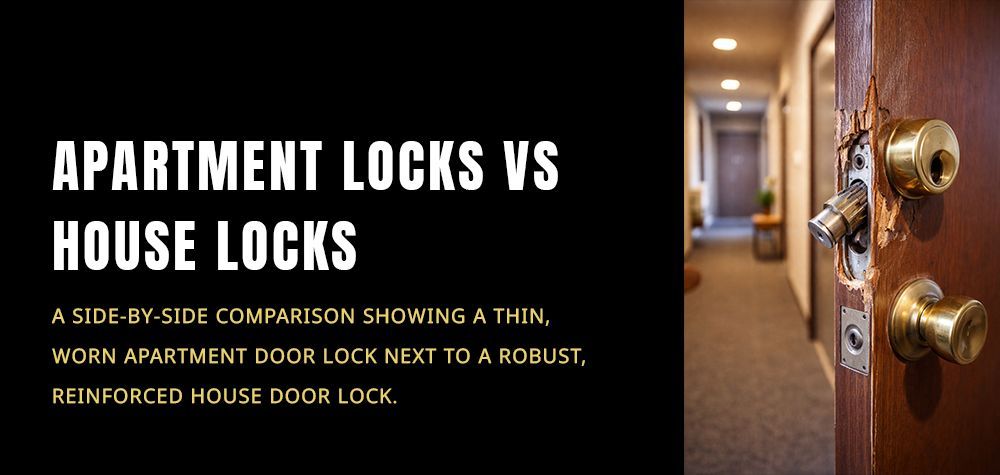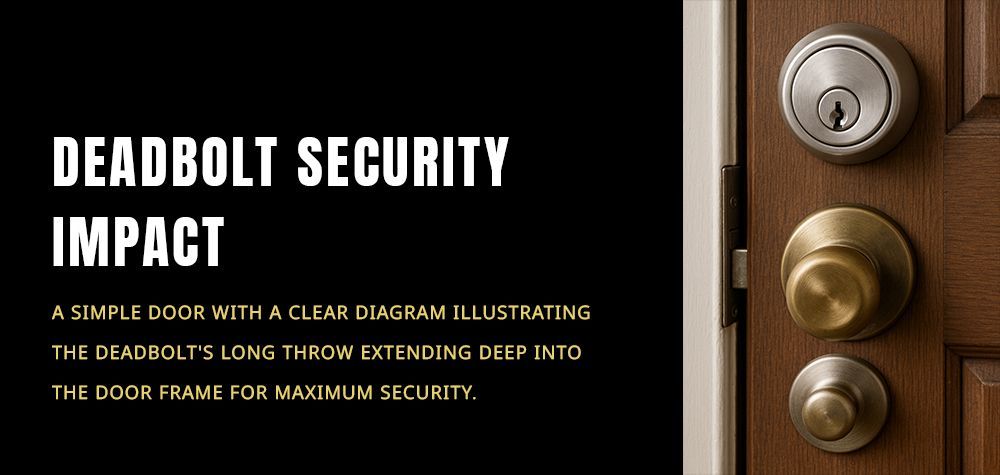Guide to Residential High-Security Door Locks
In an era where security concerns are paramount, the need for robust residential protection has never been more critical. High-security door locks serve as the first line of defense against intruders, providing homeowners with peace of mind and safeguarding their property and loved ones. These advanced locking systems utilize cutting-edge technology and superior design to offer unparalleled levels of protection compared to traditional locks.
High-security door locks are engineered to withstand sophisticated break-in attempts, offering features such as reinforced deadbolts, advanced keyless entry systems, and smart lock integration. In this guide, we delve into the world of high-security residential locks, exploring their types, benefits, installation considerations, and maintenance tips. By understanding the importance of high-security locks and implementing them effectively, homeowners can significantly enhance the safety and security of their dwellings.
Read more about Guide to keyless door locks!
Types of High-Security Door Locks
- Deadbolt Locks
- Smart Locks
- Keyless Entry Systems
- Mortise Locks
- Cylinder Locks
- Biometric Locks
- Electronic Keypad Locks
- Double Cylinder Deadbolts
- Jimmy Proof Deadbolts
- Rim Locks
Deadbolt Locks
Deadbolt locks are one of the most common and effective types of high-security door locks. They consist of a solid metal bolt that extends into the door jamb and strike plate, providing a sturdy barrier against forced entry. Deadbolts are available in various designs, including single cylinder and double cylinder options.
Security Features:
- Solid Construction: Deadbolts are typically made of hardened steel, making them resistant to cutting or sawing attacks.
- Extended Bolt: The bolt of a deadbolt extends deeply into the door jamb, ensuring that it is securely anchored and resistant to brute force attacks.
- Single vs. Double Cylinder: Single cylinder deadbolts are operated with a key from the outside and a thumb turn from the inside, while double cylinder deadbolts require a key for operation from both sides, providing additional security but also potential safety concerns in case of emergencies.
- Anti-Drill Protection: Many modern deadbolts feature anti-drill plates or pins to prevent drilling attacks, enhancing their resistance to manipulation.
Smart Locks:
Smart locks represent the cutting edge of high-security door lock technology, offering a range of innovative features designed to enhance both convenience and security. Unlike traditional locks, smart locks utilize advanced connectivity options such as Bluetooth, Wi-Fi, or Z-Wave to enable remote access control and monitoring via smartphone apps or voice assistants.
Security Features:
- Encryption Protocols: Smart locks employ sophisticated encryption algorithms to protect communication between the lock and the associated mobile app or smart home hub, ensuring that access credentials remain secure and resistant to hacking attempts.
- Tamper Alerts: Many smart locks feature tamper detection sensors that trigger alerts in case of unauthorized attempts to manipulate or force the lock. These alerts can be sent to the homeowner's smartphone in real-time, allowing for prompt action to be taken in response to potential security breaches.
- Virtual Keys and Access Codes: Smart locks enable homeowners to create and manage virtual keys or access codes for family members, guests, or service providers. These digital credentials can be easily revoked or modified as needed, reducing the risk of unauthorized access and enhancing overall security.
- Integration with Security Systems: Smart locks can be integrated with broader home security systems, enabling seamless coordination with other devices such as security cameras, motion sensors, and alarms. This integration allows for comprehensive monitoring and response capabilities, further bolstering the security of the home.
Read more about how to fix a loose door knob!
Keyless Entry Systems
Keyless entry systems revolutionize traditional locking mechanisms by eliminating the need for physical keys and adopting advanced technology for access control. These systems offer convenience, flexibility, and enhanced security features, making them popular choices for residential and commercial properties alike. Keyless entry systems utilize various authentication methods, including numeric keypads, biometric scanners, RFID cards, and smartphone apps, to grant authorized individuals access to secured areas.
Security Features:
- Multi-factor Authentication: Keyless entry systems often incorporate multi-factor authentication methods to ensure robust security. By combining two or more authentication factors such as PIN codes, fingerprints, or proximity cards, these systems offer enhanced protection against unauthorized access attempts.
- Audit Trails: Many keyless entry systems feature audit trail functionality, which records and logs all access events, including entry attempts, successful unlocks, and failed authentication attempts. These audit trails provide valuable insights into who accessed the premises and when, enabling administrators to track and review access activity for security and compliance purposes.
- Remote Monitoring and Control: Advanced keyless entry systems offer remote monitoring and control capabilities, allowing authorized users to manage access to their properties from anywhere with an internet connection. Through dedicated mobile apps or web portals, users can remotely lock or unlock doors, grant temporary access to guests or service providers, and receive real-time notifications of access events for enhanced security awareness.
- Encryption and Data Security: Keyless entry systems prioritize data security by employing encryption protocols to safeguard communication between access control devices and central management systems. By encrypting sensitive data such as access credentials and audit logs, these systems mitigate the risk of unauthorized interception or tampering, ensuring the integrity and confidentiality of access control information.
Mortise Locks
Mortise locks are a type of high-security door locking mechanism widely used in residential and commercial applications. They consist of a lock body installed within the door's mortise pocket, with a handle and cylinder extending from the lock's face. Mortise locks offer superior durability, reliability, and resistance to forced entry, making them a popular choice for securing exterior doors.
Security Features:
- Strong Construction: Mortise locks feature a sturdy construction, with the lock body installed deep within the door frame, providing enhanced resistance against forced entry attempts. The mortise pocket offers additional support and stability, minimizing the risk of the lock being compromised by physical attacks.
- Complex Cylinder Mechanism: Mortise locks typically incorporate a complex cylinder mechanism, comprising multiple pins or tumblers arranged in precise configurations. This sophisticated design makes picking or bumping the lock significantly more challenging for unauthorized individuals, thereby enhancing security.
- Deadbolt Functionality: Many mortise locks include a deadbolt component, which extends deep into the door frame when engaged, further reinforcing the door's security. Deadbolts provide an additional layer of protection against forced entry by resisting attempts to kick or pry the door open.
- Key Control Options: Mortise locks offer key control features that enable property owners to restrict unauthorized key duplication. With patented keyway designs and restricted key blanks, these locks make it difficult for individuals to obtain unauthorized copies of keys, enhancing overall security.
Read more about Guide to door lock lubricant!
Cylinder Locks
Cylinder locks, also known as pin tumbler locks, are among the most common types of door locks used in residential and commercial settings. These locks feature a cylindrical locking mechanism that employs a series of pins to secure the door. Cylinder locks offer versatility, ease of use, and compatibility with various door types and hardware configurations.
Security Features:
- Pick Resistance: Cylinder locks incorporate pick-resistant mechanisms designed to thwart unauthorized picking attempts. Advanced pin configurations, security pins, and other anti-pick features make it challenging for would-be intruders to manipulate the lock and gain unauthorized access.
- Drill Resistance: Many cylinder locks are engineered to resist drilling attacks, which are common methods used by burglars to bypass conventional locks. Hardened steel components, reinforced casings, and anti-drill plates enhance the lock's resistance to drilling, prolonging the intruder's efforts and increasing the likelihood of detection.
- Key Control Measures: Cylinder locks offer key control measures to prevent unauthorized key duplication. Property owners can implement restricted keyway designs, utilize patented key blanks, or employ key control programs to regulate access to their premises and minimize the risk of unauthorized entry.
- Key Bumping Protection: Cylinder locks may feature built-in defenses against key bumping, a technique used to exploit the lock's pin tumbler mechanism and gain entry without the correct key. Anti-bumping pins, specialized key designs, and other anti-bump technologies help mitigate this security vulnerability, enhancing overall lock security.
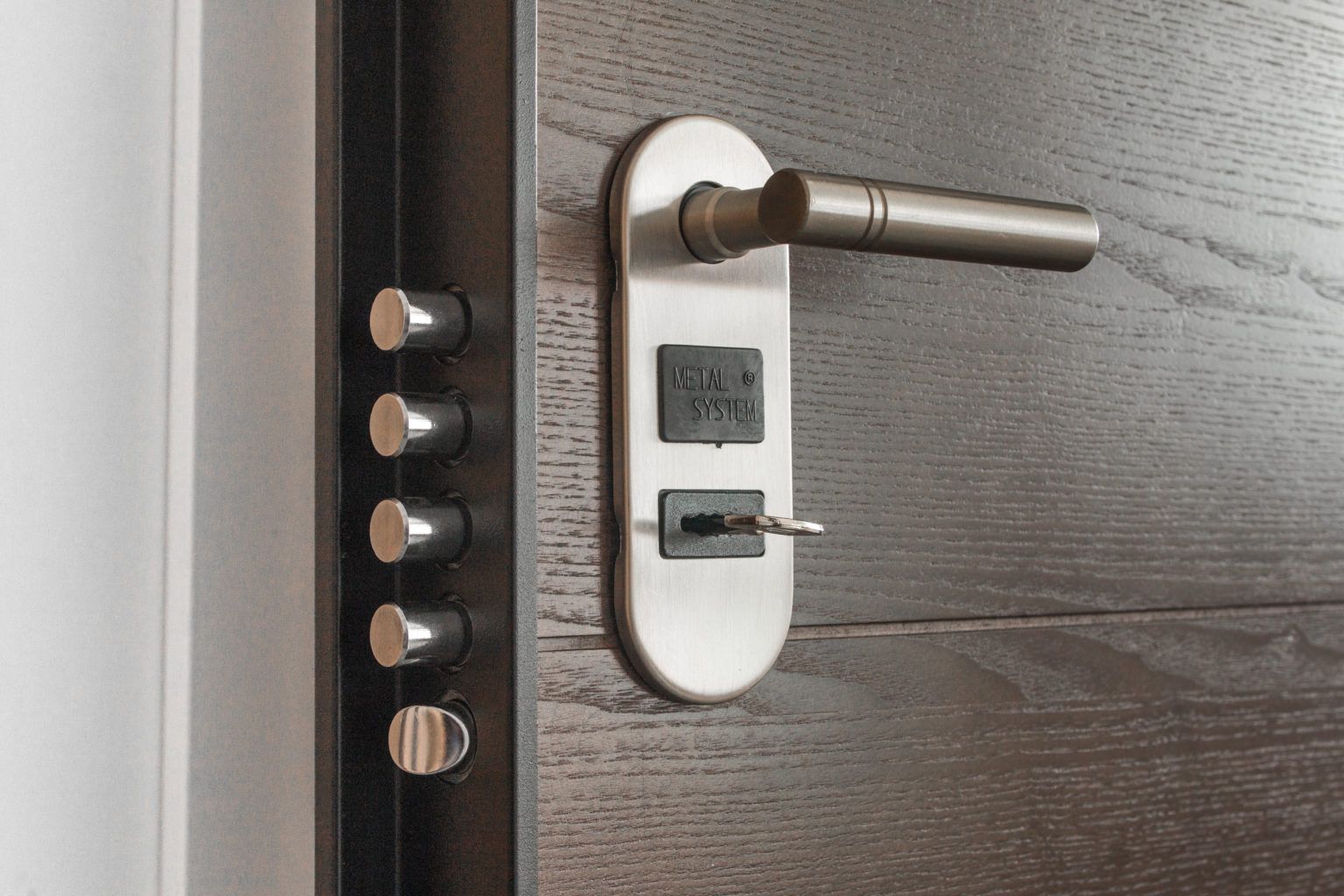
Biometric Locks
Biometric locks utilize advanced technology to provide secure access control based on unique physiological characteristics, such as fingerprints, iris patterns, or facial features. These locks offer high levels of security and convenience, eliminating the need for traditional keys or access codes.
Security Features:
- Unique Biometric Identification: Biometric locks authenticate users based on their unique physiological traits, such as fingerprints or iris patterns. These characteristics are virtually impossible to duplicate, ensuring that only authorized individuals can gain access to the secured area.
- Tamper Resistance: Biometric locks are designed to resist tampering and unauthorized manipulation. Advanced sensors detect anomalies and irregularities, such as fake fingerprints or spoofing attempts, triggering alarms or preventing access until the identity can be verified.
- Multi-Factor Authentication: Some biometric locks incorporate multi-factor authentication methods to enhance security further. In addition to biometric recognition, these locks may require secondary authentication factors, such as PIN codes or proximity cards, adding an extra layer of protection against unauthorized access.
- Audit Trails and Logging: Many biometric locks feature built-in audit trail capabilities, recording detailed logs of access events, including user identities, timestamps, and access attempts. This logging functionality provides valuable forensic data for security audits, investigations, and compliance purposes.
Electronic Keypad Locks
Electronic keypad locks offer keyless entry by allowing users to input a predetermined numerical code to unlock the door. These locks are popular for their simplicity, convenience, and ability to provide customizable access control.
Security Features:
- Customizable Access Codes: Electronic keypad locks enable users to create and manage multiple access codes, allowing them to grant temporary or permanent access to individuals as needed. This flexibility enhances security by minimizing the distribution of physical keys and providing precise control over who can enter the premises.
- Anti-Tamper Protection: Electronic keypad locks often incorporate anti-tamper features to protect against unauthorized access attempts. These may include alarm triggers, lockout mechanisms, or delayed entry functions that activate in response to repeated incorrect code entries or tampering.
- Secure Code Transmission: Advanced electronic keypad locks utilize encrypted communication protocols to transmit access codes securely between the keypad and the locking mechanism. This encryption helps prevent interception or manipulation of the code, reducing the risk of unauthorized access by hackers or cybercriminals.
- Battery Backup: To ensure uninterrupted operation, electronic keypad locks are equipped with battery backup systems that provide power in the event of a power outage. This feature ensures that the lock remains functional even during emergencies, maintaining security and accessibility for occupants.
Double Cylinder Deadbolts
Double cylinder deadbolts are a type of deadbolt lock that require a key for both the exterior and interior sides of the door. These locks offer enhanced security by preventing unauthorized access even if a potential intruder breaks a nearby window or glass panel.
Security Features:
- Dual-Key Operation: Double cylinder deadbolts require a key to lock and unlock the door from both the inside and outside. This feature provides added security by requiring physical keys for entry or exit, making it more challenging for intruders to bypass the lock.
- Protection Against Forced Entry: By requiring keys on both sides of the door, double cylinder deadbolts offer protection against forced entry attempts, such as using tools to reach through broken glass or manipulate the interior thumbturn of a single cylinder deadbolt. This helps deter burglars and intruders from gaining unauthorized access to the property.
- Child Safety: Double cylinder deadbolts can also enhance child safety by preventing young children from accidentally unlocking the door and wandering outside unattended. Since keys are required to operate the lock from both sides, children cannot unlock the door without adult supervision.
- Key Control: Double cylinder deadbolts provide greater key control, as both keys are necessary to operate the lock. Homeowners can control access more effectively by limiting the distribution of keys and ensuring that only authorized individuals have the ability to unlock the door.
Jimmy Proof Deadbolts
Jimmy proof deadbolts, also known as interlocking deadbolts, are surface-mounted locks designed to resist forced entry attempts, particularly through doorjamb manipulation or prying. These locks feature a unique vertical bolt configuration that provides added security.
Security Features:
- Interlocking Bolt Design: Jimmy proof deadbolts utilize a unique interlocking bolt mechanism that engages with the strike plate or door frame when the door is closed. This design prevents the door from being forced open by spreading or prying apart the doorjamb, making it more resistant to break-ins.
- Surface-Mounted Installation: Jimmy proof deadbolts are installed on the surface of the door and door frame, rather than being mortised into the door like traditional deadbolts. This installation method makes it easier to reinforce weak or damaged doorjambs, increasing overall door security.
- Reinforced Strike Plate: To complement the interlocking bolt mechanism, jimmy proof deadbolts often come with a reinforced strike plate that mounts to the door frame. This heavy-duty strike plate helps distribute the force of attempted break-ins more effectively, further enhancing the lock's resistance to forced entry.
- Simple Operation: Despite their robust security features, jimmy proof deadbolts are relatively simple to operate. They typically use a thumbturn or key cylinder on the interior side of the door to lock and unlock the bolt, providing convenient access for authorized users while maintaining security against intruders.
Rim Locks
Rim locks, also known as surface-mounted locks, are installed on the surface of the door rather than being recessed into the door itself. These locks are commonly used on gates, sheds, and interior doors, offering simple yet effective security.
Security Features:
- Surface-Mounted Installation: Rim locks are installed on the surface of the door, making them easy to retrofit onto existing doors without the need for extensive modifications. This installation method also allows for quick and straightforward installation, making rim locks a popular choice for both residential and commercial applications.
- Keyed Entry: Rim locks typically feature a key-operated cylinder on the exterior side of the door, allowing users to lock and unlock the door with a key. This provides a basic level of security by requiring authorized access for entry, helping prevent unauthorized individuals from gaining access to the property.
- Latch Mechanism: Rim locks utilize a latch mechanism that engages with a strike plate mounted on the door frame or adjacent surface. When the door is closed, the latch extends into the strike plate, securely holding the door in place. Some rim locks may also feature additional deadlocking mechanisms to further reinforce security.
- Versatility: Rim locks are versatile and can be used in various applications, including gates, sheds, cabinets, and interior doors. They come in a range of designs and finishes to complement different architectural styles and aesthetic preferences, making them suitable for both residential and commercial use.
Conclusion
In conclusion, high-security door locks offer essential protection for homes, businesses, and other properties, helping to deter unauthorized access and potential break-ins. Whether it's the robust construction of double cylinder deadbolts, the innovative technology of smart locks, or the reliability of traditional rim locks, there are various options available to suit different security needs and preferences.
Investing in high-security door locks not only provides peace of mind but also enhances overall safety and protection for occupants and valuable assets. By understanding the features and benefits of different types of high-security locks, property owners can make informed decisions to safeguard their premises effectively. Remember, the effectiveness of a high-security door lock depends not only on its design and features but also on proper installation and maintenance.
Regular inspection, maintenance, and timely upgrades can ensure that these locks continue to perform optimally and provide reliable security for years to come. Whether you're upgrading your home security system or fortifying your commercial property, choosing the right high-security door locks is a critical step in enhancing overall security and protecting what matters most.
With the right combination of advanced technology, durable construction, and reliable performance, you can create a secure environment where you can live and work with confidence.
Call Us Any Time!




